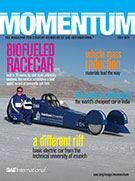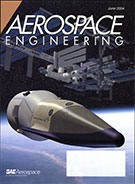Technical Paper
FLIGHT-TESTING EQUIPMENT for Large AIRCRAFT
1943-01-01
430131
Back in the sleeping compartment, completely unattended, automatic flight recorders and an automatic temperature recorder system continuously gather all possible information on the operation of the engines, controls, and performance of the airplane.




